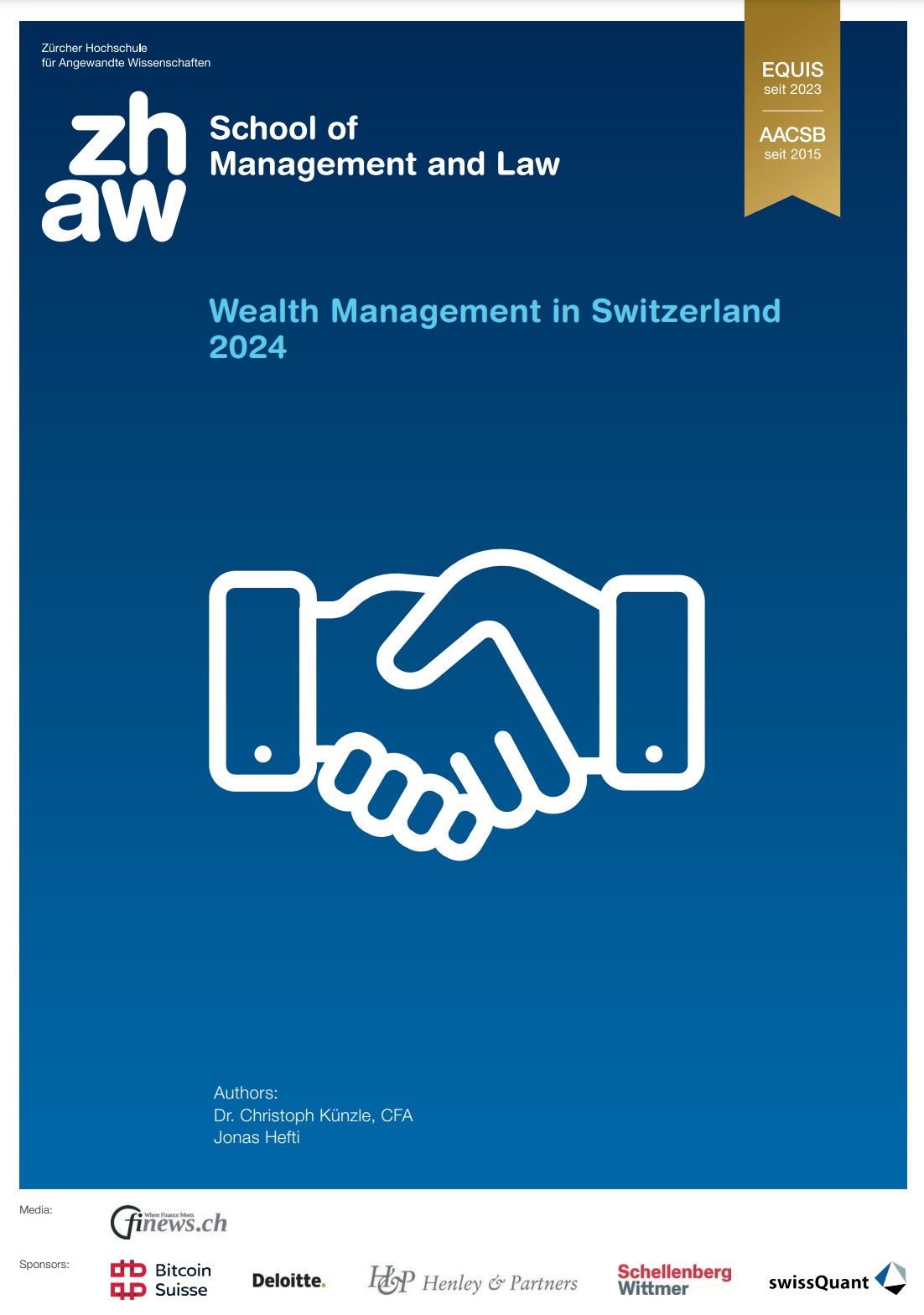We are happy to anounce that the latest version of our Swiss Wealth Management Study has just been released and can now be downloaded as a free PDF.
The new “Swiss Wealth Management Study 2024” by Dr. Christoph Künzle, CFA, and Jonas Hefti from the ZHAW School of Management and Law offers a data-rich perspective on Switzerland’s wealth management industry during a transformative year.
The Swiss wealth management industry remains substantial, with 66 banks managing CHF 7.8 trillion in global AUM. This marks a solid 5.5% growth in AUM, supported by CHF 137 billion in NNM inflows into Swiss wealth management banks. This influx follows a period of net outflows in the previous year, which occurred when Credit Suisse experienced significant turmoil. These positive developments suggest that Swiss wealth management banks have effectively retained and expanded their client bases through asset retention and acquisition strategies. Following the integration of Credit Suisse into UBS, the industry has seen significant consolidation, and today is dominated by UBS, which accounts for 67% of total AUM.
The industry is primarily concentrated around Zurich and Geneva, driven by major players and other leading private banks. However, regional hubs including Lugano and Basel also contribute significantly, maintaining the sector’s diversity and reach.
Operational efficiency has been a key focus across the industry, as reflected in the ZHAW WM Performance Score. Banks have shown improvements in Cost-Income Ratios, highlighting ongoing efforts to streamline operations and boost profitability. However, performance remains variable across institutions. Notable performers stood out with strong growth metrics, successfully attracting significant amounts of new assets. Conversely, certain banks continue to face challenges, particularly smaller institutions, indicating opportunities for further industry consolidation – or for strategic realignment, digital transformation, and operational optimization.
Another critical aspect in the industry remains governance, where there is considerable variance in board compositions and structures. A significant finding is the underrepresentation of women on Boards of Directors. Over onethird of Swiss wealth management banks have no female members on their boards. Additionally, board sizes vary widely, with larger institutions maintaining broader governance structures to manage complex operations, while smaller banks favor leaner setups. These differences reflect diverse approaches to governance, likely shaped by each institution’s strategic focus, scale, and business model.
